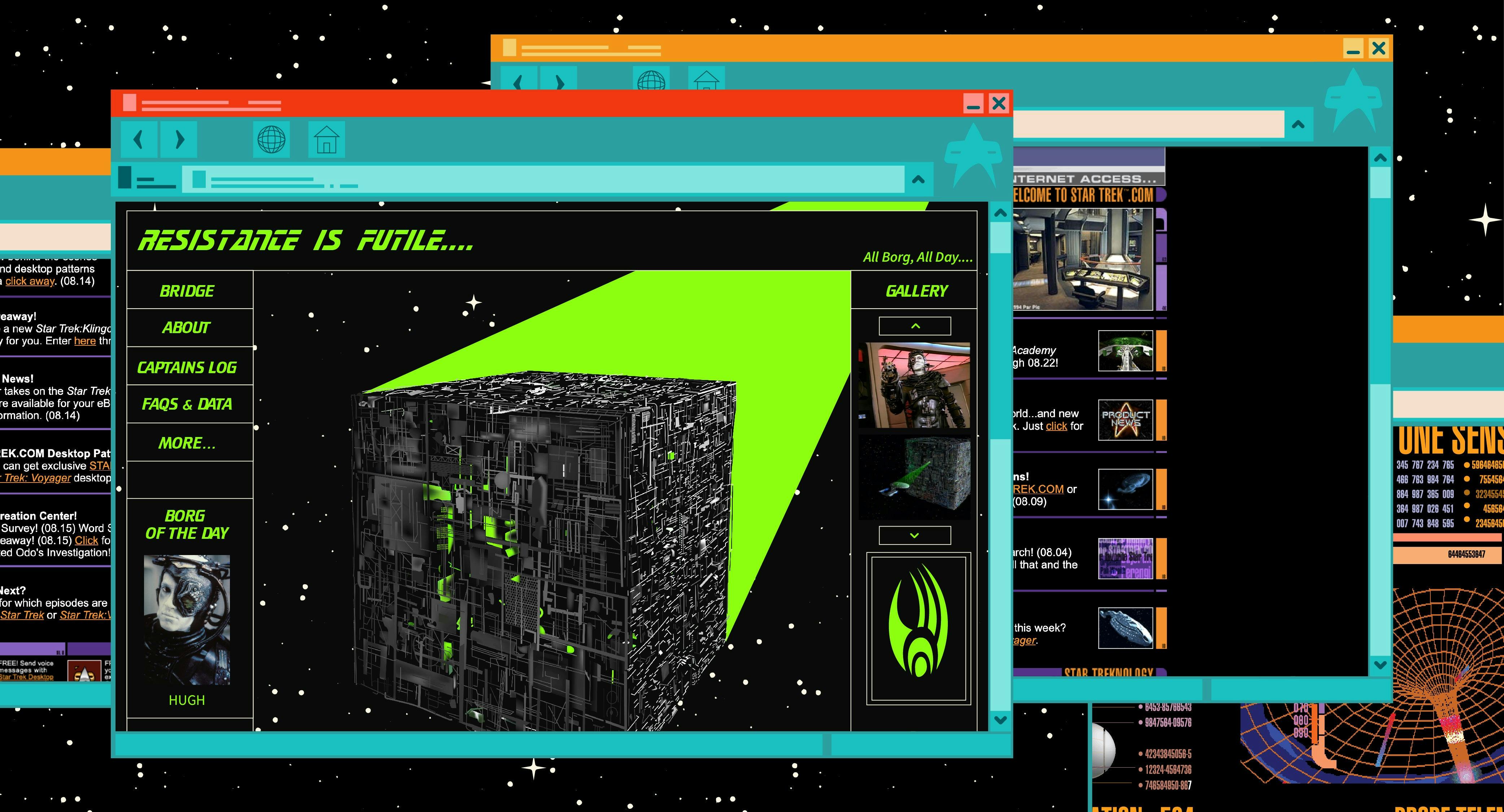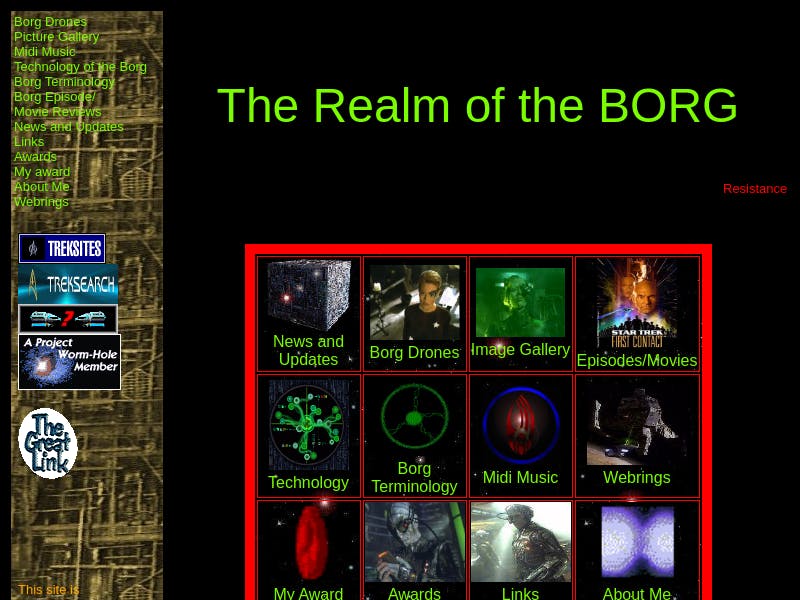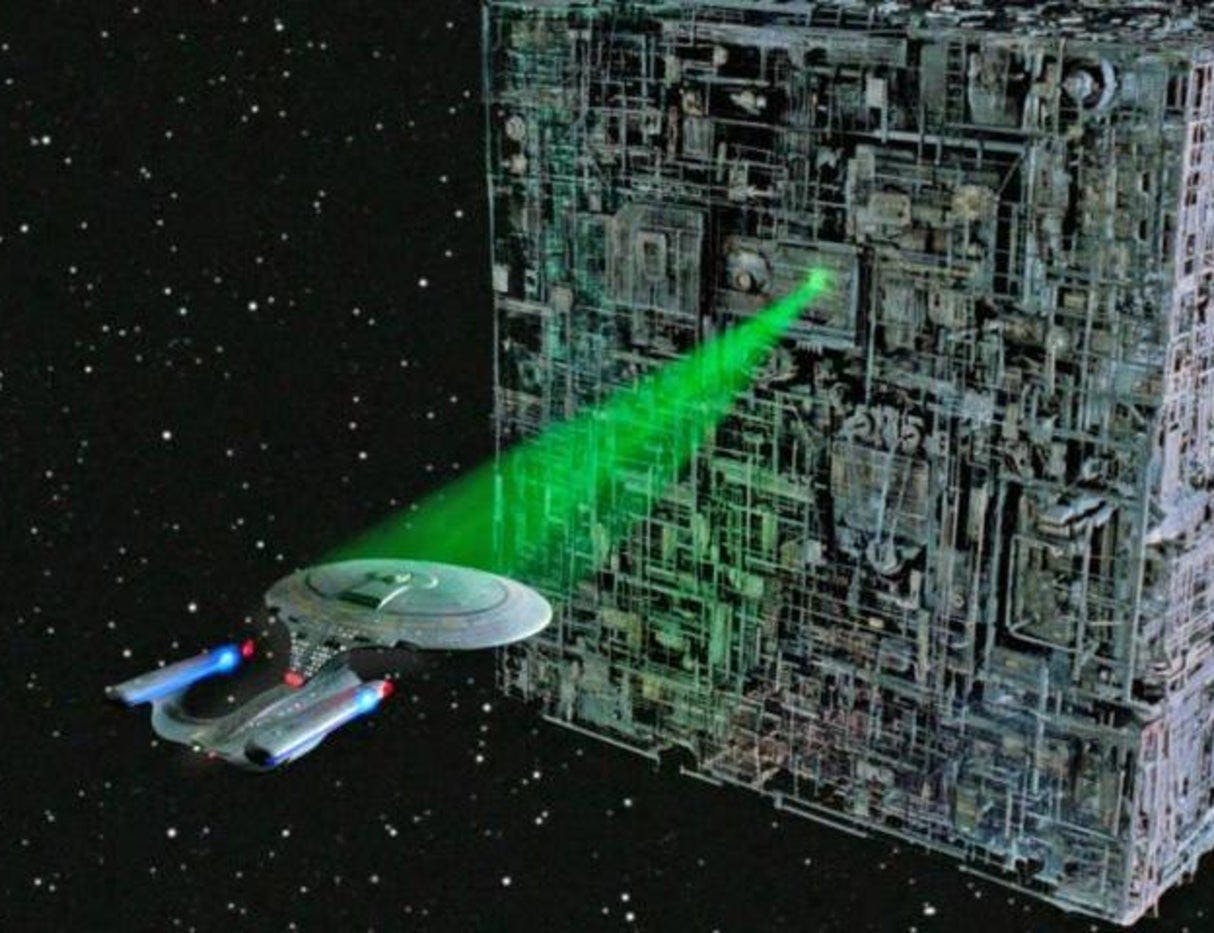Published Sep 8, 2021
The Wonderful World of Star Trek On the Late 90s Web
How Star Trek fandom has evolved online.

StarTrek.com
Many of us can recall how websites used to look in the ‘90s; marquees spanning the top of the page, visitor counters, guestbooks, and MIDI music playing on an endless loop. Half the time, pages were under construction, urging visitors to “come back later!” Compared with web design these days, pages back then were not only primitive, but positively antediluvian — relics from a long-gone digital stone age. Despite all of that, they were trailblazing experiences, a way to reach out amidst the void we called the early web and make ourselves heard. It was the beginning of something special.
I tend to romanticize this time, the late ‘90s, because back then, the web was still novel and mysterious. Anyone who mastered simple code could hop on the internet and create a site, not following any rules or standards. If you wanted a giant rotating Borg cube on your homepage, so be it. If your thing was bouncing images of Damar drinking kanar, make it so. If you wanted to compose a two-thousand word essay on why you believe there was a Weyoun clone still alive and well in the gamma quadrant, no one could stop you. We were on the web to get our ideas out and to connect. Was it a limited means of communication? Of course. But it was the first real chance to share our thoughts with like-minded individuals. And that’s what made it special.

StarTrek.com
I didn’t know HTML when I decided I wanted to create my very first Star Trek website during an episode of Voyager one evening. I went out and bought every book I could find on HTML. My main goal was mastering the code well enough to “make cool stuff” (I confess, I hadn’t thought it through much further). I remember hiding out in the school library spending countless hours of the day memorizing HTML tags. My goal: make my future Star Trek site unique, fun, and a hub — a place where any fan could feel at home. After relatively little internal debate, it was obvious what my page would be about: the Borg. Since a young age, I had been obsessed with the Borg — undoubtedly my favorite villains in all of Star Trek. I even permanently decorated my room with green Christmas lights to mimic the general lighting and ambiance of a Borg ship. It was time I paid homage to them; my site, “The Realm of the Borg,” was born.
The main goal of a late ‘90s website was to give the user an unforgettable experience. Webmasters shoved as much content, flashy gifs, and as many links as we possibly could onto a page. But the biggest dream of any webmaster in this era, was to have your page become the destination for whatever it was about. And this is what “The Realm of the Borg” became. Not only was its navigation bar wallpaper the inside of a Borg cube, but there were dozens of subpages that focused on everything from Seven of Nine’s background, to ship designs, to an elaborate chronicle of every single Borg appearance in specific episodes thus far. I’d run home from school, connect to the dial-up internet (successfully disrupting our phone line for several hours, something my dad wasn’t too happy about), and make daily updates. Whether it was based on the latest Voyager episode that revealed a little more about the Borg, or something I had picked up from yet another TNG rewatch, there was always something to add, something to tweak. Essentially, “The Realm of the Borg” was an online encyclopedia of sorts, and daily updates kept it fresh and relevant.

StarTrek.com
Once your site was fully established, you requested to join webrings. These were groups of sites with similar content. Once approved, you’d add a graphic with an embedded link, and whoever would click on it would be taken to another site in the list of links (and yes, one webring was even called “The Great Link”). We’d also add a page full of hundreds of links to similar sites. Again, search engines weren’t very robust back then — you couldn’t just type something into one and get quality results. Bouncing around from site to site to find what you needed was quite common, and since there was no such thing as SEO, you had to proactively reach out to other sites and try to get the word out about your own. Somehow, through these somewhat limited means, we found ways of communicating with one another. Eventually, we built our own community, and could spend countless hours navigating the world we created, learning new things, meeting fellow fans, and avidly discussing our favorite subject: Star Trek.
These days, there are numerous ways to connect with likeminded fans. Social media, blogs, and dedicated sites bring us together. But what was accomplished long ago by a few trailblazing individuals established the foundation for what was to become an extraordinary community. Were our means limited? Of course! Anyone who ever used AIM back in the day will know the heartache of missing an instant message because you weren’t home. There were difficulties and limitations, but the spark of something great was lit. No one could’ve foreseen how ubiquitous the internet would become in our relationships, both platonic and non. The years that have since elapsed have evolved those early days of Star Trek on the web into much more, forming a real community of authentic, passionate fans for a franchise that unites us via more robust and accessible ways of communication.

StarTrek.com
There’s not a day that goes by that I don’t think back with some nostalgia on how the web evolved into what it is now. I think especially often of how those early days inspired and propelled us fans into engaging and sharing our interests with one another. Part of me knows that all of us who memorized HTML tags and painstakingly built pages using the slowest imaginable modems, played some part in laying the foundations for a robust and amazing community. By doing so, we not only helped one another, but we found a way of reaching out through the void of dial-up internet. That desire to connect has not only survived, but it has expanded and grown into the fandom that exists today on the web, due in part to those first digital connections we made decades ago.
Hrisoula Gatzogiannis (she/her) has a B.A. & M.A. in Classics and now works in digital strategy. She loves writing and has authored a few books on various subjects. She currently resides in Boston, but wishes she lived on Deep Space Nine. Find her on Twitter @MissHrisoula

